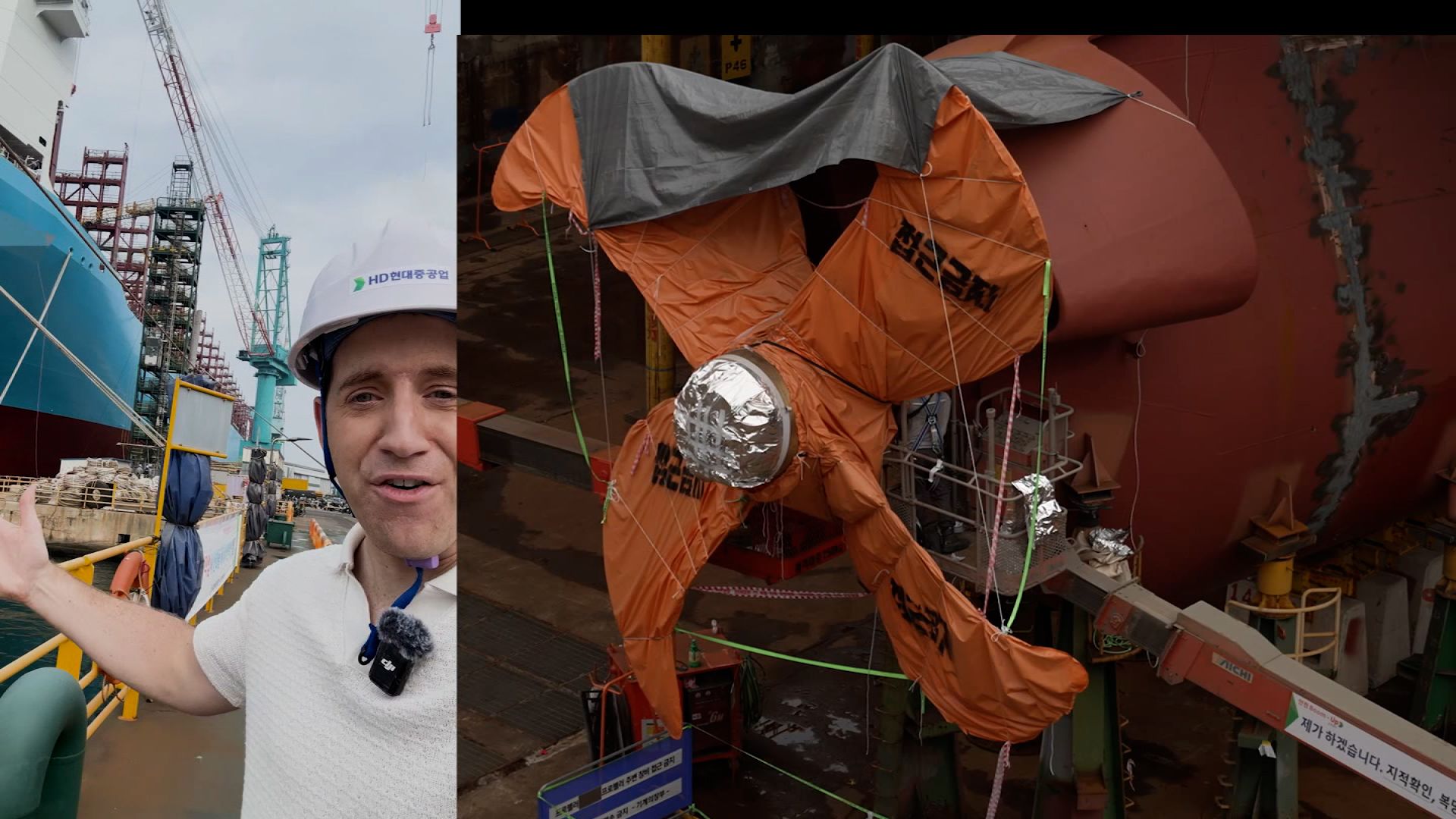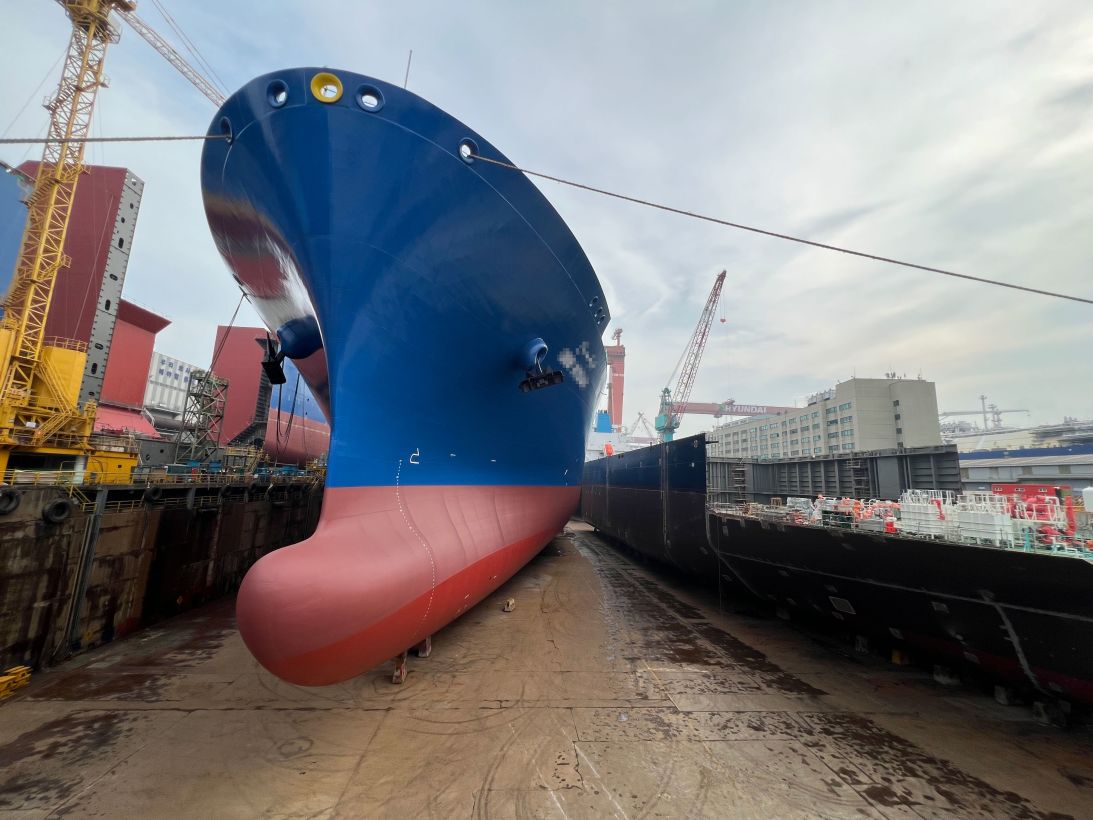US President Donald Trump wants to “Make American Shipbuilding Great Again.” And leaders at two South Korean shipyards say that, given the chance, they could do just that.


The shipyards – run by HD Hyundai Heavy Industries in Ulsan, and Hanwha Ocean in Geoje – are already making some of the world’s top-rated warships for the South Korean navy. On time. And within budget.
Officials at both facilities are emphatic that they are ready to share the technology and knowhow needed to construct guided-missile destroyers, frigates and submarines with a US Navy that faces a shipbuilding crisis as it tries to keep up with an ever-growing Chinese fleet.
Top officials have made the size of the problem clear.
“All of our programs are a mess,” US Secretary of the Navy John Phelan told a US House hearing in June.
“I think our best one is six months late and 57% over budget … That is the best one,” Phelan testified.
While Phelan’s comments may come as a shock to some, they’re no big secret.
US shipbuilding programs have been chronically behind schedule and over budget for years.
All the while, one of Washington’s closest Pacific allies is forging ahead.
During a CNN visit to the Hyundai and Hanwha shipyards last month, officials explained how South Korea has become a shipbuilding powerhouse that turns out vessels quickly and efficiently.

At the Hanwha yard, officials showed CNN brand-new buildings specially built to service an an order for four frigates from the South Korean navy. The massive building where the hulls will be put together took just 14 months to complete, one official said.
The 122-meter-long, 3,100-ton frigates that will be built there will be formidable, with vertical launch cells for air defense missiles and the ability to launch anti-ship missiles as well as anti-submarine torpedoes.
Each will take about three years to complete. That’s approximately as long as the delays plaguing the US’s Constellation-class frigate program, according to a Congressional Research Report, a prime example of the problems with US shipbuilding.
The delays are blamed on the Navy making too many alterations to an existing design used by the Italian and French navies, upon which the class was to be based.


So how can South Korean shipbuilders do it so much more smoothly?
Workforce and logistics, Korean shipyard leaders say.
Lee Jin, vice president at the HD Hyundai Heavy Industries facility in Ulsan, the world’s largest shipyard, says people – and their years of experience – come first. The average worker in HHI’s workforce of 32,000 has been with the company 16 years, he said.
US shipping expert Sal Mercogliano, a professor at Campbell University in North Carolina, said the fact that Korean shipyards toggle between military and commercial work is a strength.
That allows them to “keep a core group of shipworkers in the yard,” he said, switching between military and commercial projects as new business dictates.
Mercogliano said the US made a big mistake post-World War II – when it was a shipbuilding giant – by outsourcing commercial shipbuilding to cheaper places like South Korea and Japan and concentrating on military vessels.

“We really gave up the shipbuilding industry foolishly, many years ago,” President Trump said during his August summit with South Korean President Lee Jae Myung at the Oval Office, where the two leaders reaffirmed the “Make American Shipbuilding Great Again” project that Seoul first presented during tariff negotiations in July.
Now, shipbuilding knowledge will be traveling in the opposite direction across the Pacific and “it could be a big game changer,” Mercogliano said.
And the companies aren’t stagnating. They’re continually adjusting, refining and improving the manufacturing process, a Hanwha official told CNN.
Having commercial shipyards side by side with military ones allows South Korean companies to do that, said former US Navy captain Carl Schuster. US military shipyards get inconsistent orders from the Pentagon, he says, so they don’t invest in new processes that may not be used when Congress cuts funding.
“If you are a corporation, are you going to invest $100 million in automating a shipbuilding line, and then, when you finish, there’s no work?” he asks.
And then there’s the supply chain. South Korea is a small country, especially compared with the US, and much of its heavy industry is in the south.
The shipyard can source about 90% of parts and materials it needs from within 50 kilometers (31 miles) of the Geoje shipyard, located on an island at the peninsula’s southern tip, said Hanwha Ocean General Manager Jeon Yu-su.
The efficiency of the Korean shipyards is notable.
At the commercial section of the Hyundai yard on a Wednesday afternoon, a massive section of hull moved along a street atop a unique flatbed vehicle, its driver in a cab below the slab of steel. Three bike riders in yellow vests worked with the driver, reporting the slab’s position, pointing out obstacles that can be cleared by hydraulically raising the slab, and warning other traffic to stay out of the way.
Trucks and scooters whizzed in and out of assembly buildings for drop-offs and pickups before and after the steel slab passed by. It’s frenetic, but safety first, as demanded by signs on the campus.
“There is not a single important task in our company that is worth you getting hurt over,” one sign says.
Nearby, huge overhead cranes, rising some 360 feet above the yard and capable of lifting almost 1,300 tons, move on tracks, the opening notes Beethoven’s “Für Elise” warning of their movement.
A CNN reporter asked if this can be duplicated in the US, to Make American Shipbuilding Great Again.
Hanwha hopes so. Last year it bought Philly Shipyard in Pennsylvania, and earlier this year announced it will pump $5 billion into the facility, looking for commercial and eventually military work.
Hyundai, too, hopes for a larger US presence.
But US law prevents its Navy from buying foreign-built ships – even from allies like South Korea – or from building its own ships in foreign countries, due to both security concerns and a desire to protect American shipbuilding.
There’s also the fallout from an immigration raid on a Korean battery plant in Georgia that has raised fears that US-Korean cooperation could be stunted.
Having US Navy ships built in South Korea would require Congress and the Trump administration to change those laws and regulations – and to keep visa relations smooth.
A recent deal between the US and Finland that will see four US Coast Guard icebreakers built in Finnish shipyards – before another seven are built on American shores – could be a template for overseas naval shipbuilding, although different regulations apply to the Navy, part of the Defense Department, and Coast Guard, part of the Homeland Security Department.
Mercogliano, the Campbell University professor, says Congress could loosen requirements for commercial or naval auxiliary and supply vessels to be US-built.
“I think there’s a great potential to start building ships in Korea and then morph it over to the United States,” he says.
But Hanwha’s Jeon is aiming higher.
Asked if he wants to see US warships being made in the Geoje shipyard, his answer is quick and unequivocal.
“Yes!”



